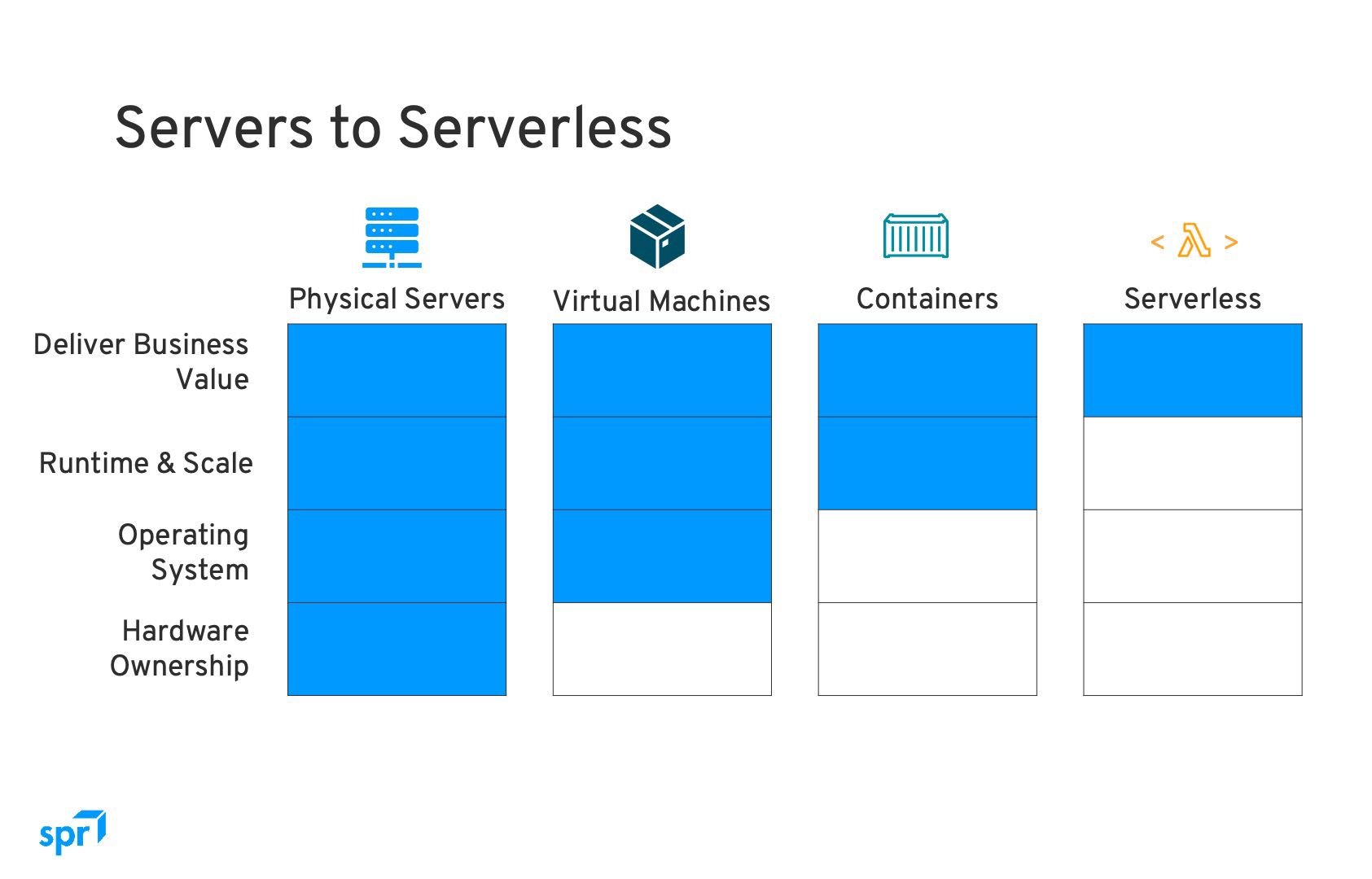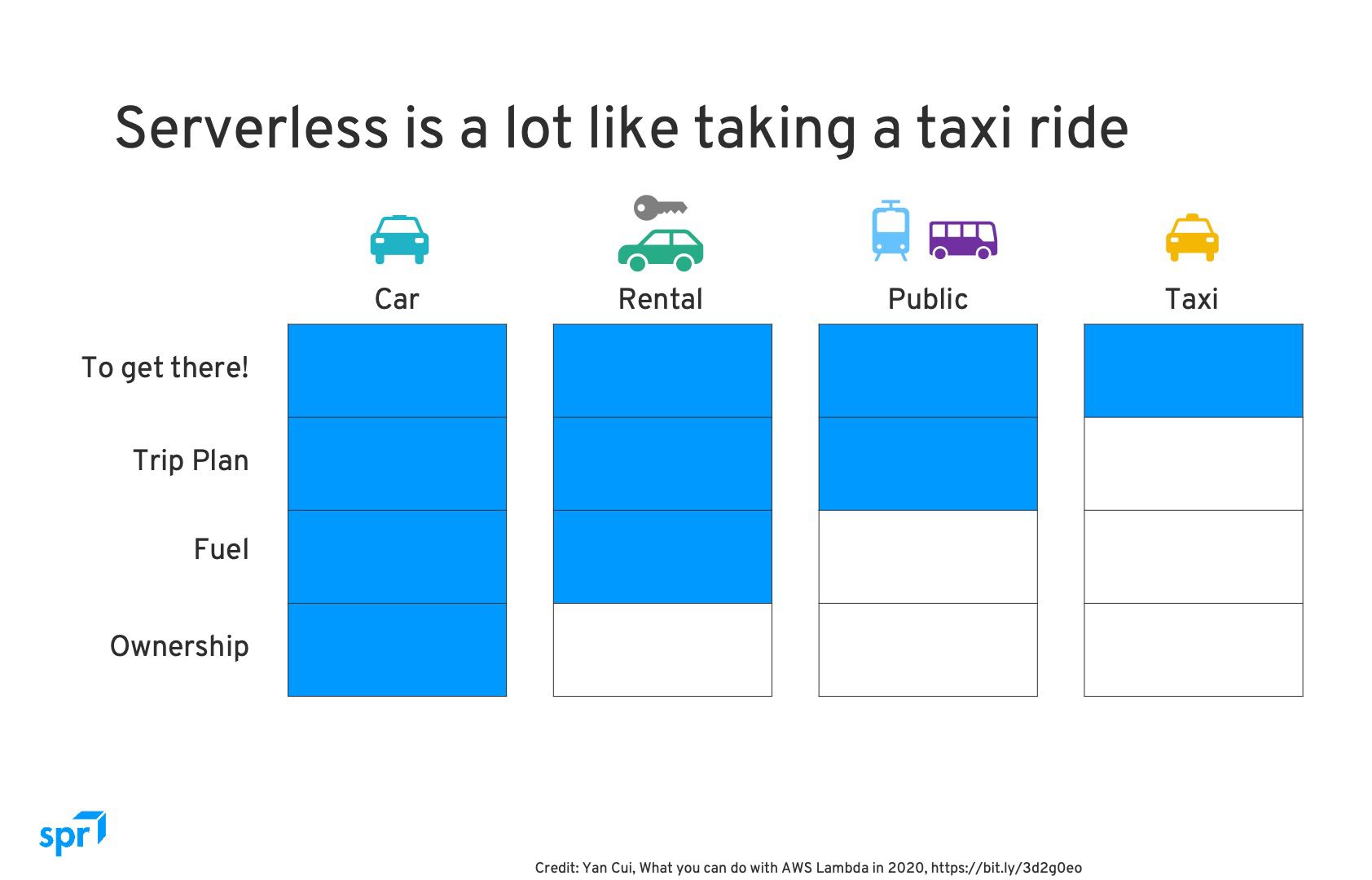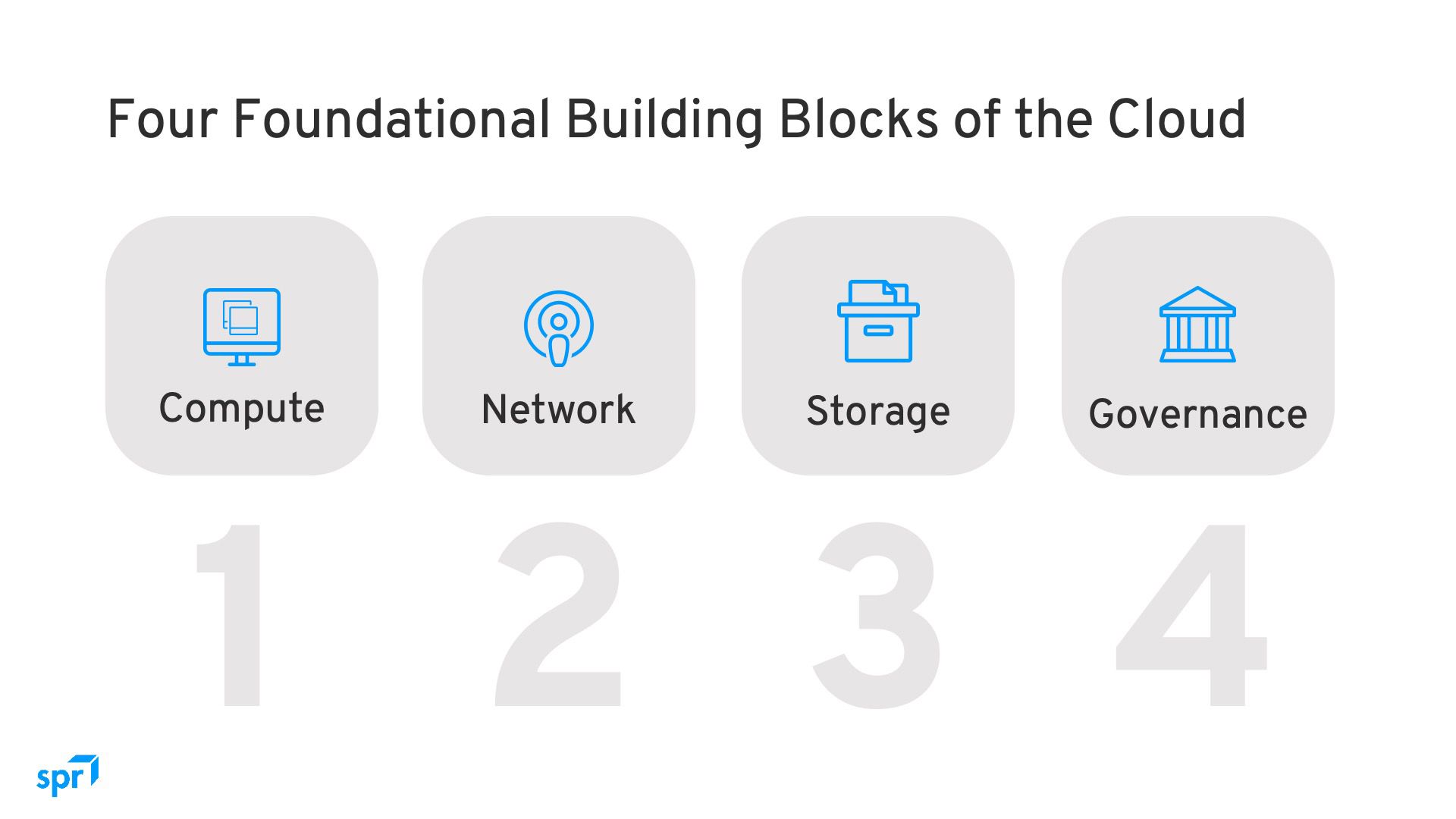Key Takeaways from SPR’s Virtual Serverless Immersion Day
SPR recently held a virtual event to guide business and technology leaders to learn more about serverless, and to understand how AWS Lambda functions are a common building block in this type of technology solution. You can also watch the video version of this content.

Similar to choosing a taxi ride, a serverless approach allows businesses to eliminate unnecessary tech responsibilities. Technologists can focus more on creating and improving technology applications that provide competitive differentiation."
Why serverless?
Serverless allows you to run applications without worrying about provisioning and managing servers. A serverless development approach allows you to increase your agility, scale your workloads easier, and reduce human errors. Without having to manage infrastructure, your organization can spend more time innovating.
So, what made serverless possible?
As computing evolved, the infrastructure supporting it evolved with it. Technology infrastructure went from physical to virtual and eventually became "invisible.”
The changes in hardware and infrastructure spurred innovation in software.
We needed to evolve our software architectures to take advantage of these improvements. 
If we don’t have to worry about our infrastructure, we can focus our energy and resources on delivering business value. As we go from servers to serverless, we can see a shift in the work required to deliver a digital solution. Work related to managing or provisioning technology infrastructure doesn’t provide a competitive advantage, so this type of lower-value work can be reduced or eliminated by shifting to a serverless approach.
In some ways, the choices we have for running digital workloads mirror the choices we have for transportation. If we look at our transportation options, each comes with its share of responsibilities. On a spectrum of transportation choices from car ownership to car rentals, public transit, and eventually taxis, we can see a similar shedding of responsibilities. With less responsibility we can focus more on achieving our desired outcome: Getting to our destination. Serverless in this case is a lot like taking a taxi: We can get to our destination without being burdened by maintenance, fuel costs, or navigation.

Similar to choosing a taxi ride, creating applications using a serverless approach allows businesses to eliminate unnecessary tech responsibilities. By reducing time spent overseeing their infrastructure, technologists can focus more on achieving desired outcomes: creating and improving technology applications that provide competitive differentiation.
So how do we build serverless solutions?
There are four foundational building blocks of cloud computing: (1) compute, (2) network, (3) Storage, and (4) Governance.

Let's focus on one building block, compute, and AWS Lambda, a common component at the core of most event-driven, serverless applications. Lambda functions are event-driven, short-lived, momentary executions of code. You can think of them as ephemeral compute, and they’re the perfect way to respond to business events, like a customer's order being placed or a business facility's sensors being triggered. Events like these examples are ideal opportunities for serverless application development, using AWS Lambda functions.
Characteristics of AWS Lambda Functions
Lambda functions have small memory footprints, are compact in size, and are time limited. These constraints make them ideal for highly-scalable, event-driven architectures.

Lambda functions are designed to launch quickly and to scale infinitely to handle events as they are triggered. This makes it easy to scale up and down. Since your functions are only executing when needed, they enable you to pay-by usage and not for provisioned resources. You never have to pay for idle time with Lambda. This benefits businesses since there is no costs incurred from managing and provisioning servers. There is no need to over provision to handle the occasional periods of high demand that your business may face. Since your organization doesn’t need to invest in operating these servers or paying for idle resources, those resources can be focused on delivering new features and functionality.
Recap
Serverless lets you run your applications without servers. It lets your business shed responsibilities and focus on aspects of your tech that make your business unique. Compute is a main building blocks of cloud solutions, and AWS Lambda functions are ephemeral (short-lived) compute.
Lambda functions reduce the need for older, costly, always-on approaches that involve servers.
So, when you’re thinking about building your next application or modernizing the ones you already have, consider serverless. It doesn’t just enable your business to build those apps without thinking about servers; it also enables you to focus on investing in delivering business value, instead of focusing time and energy on infrastructure.
If you're interested in exploring how your business can be better enabled through serverless solutions, reach out to us to talk to one of our serverless experts. Or, explore some of our related content:
Why You Should Use a Serverless Application


